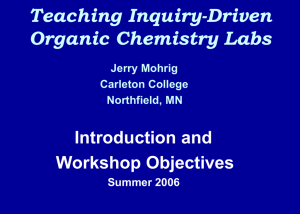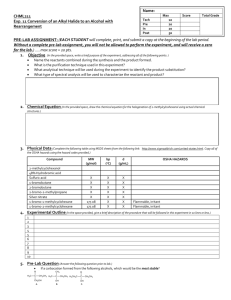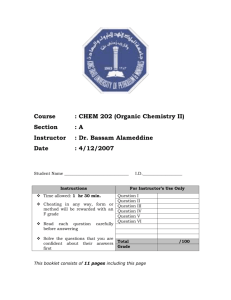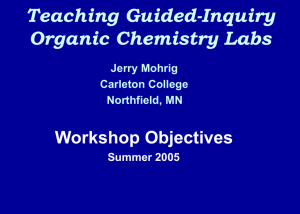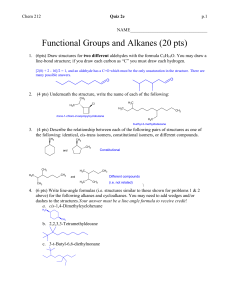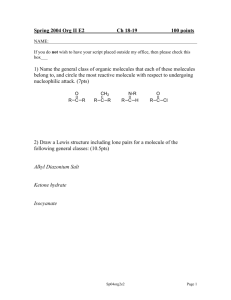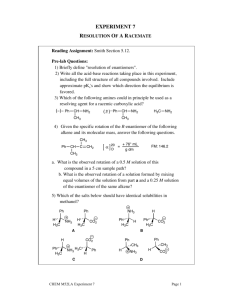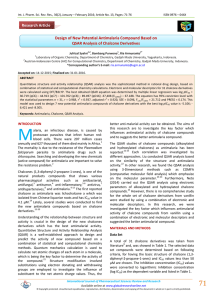Teaching Inquiry-Driven Organic Chemistry Labs
advertisement
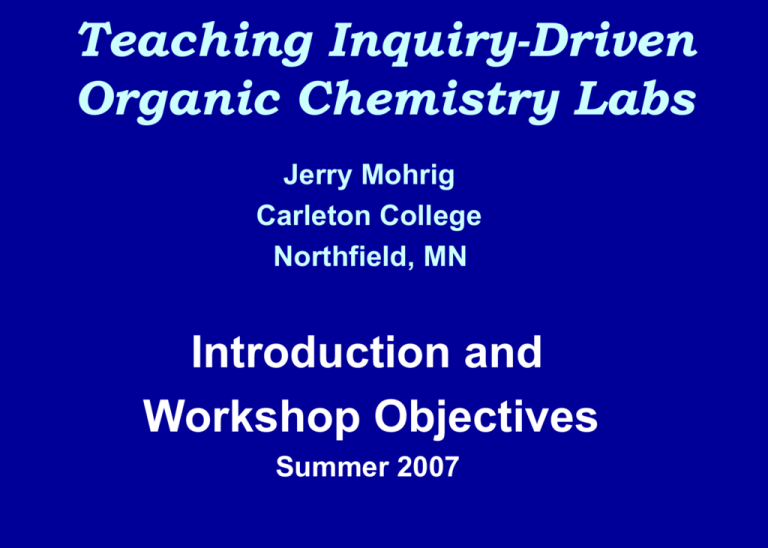
Teaching Inquiry-Driven Organic Chemistry Labs Jerry Mohrig Carleton College Northfield, MN Introduction and Workshop Objectives Summer 2007 Workshop Objectives • Provide the participant hands-on experience with question-driven, guided-inquiry organic chemistry projects and experiments. • Allow the participant to evaluate what works well for guidedinquiry and design-based experiments and what are the practical constraints. • Help the participants learn how to invigorate their laboratory courses by using inquiry-driven experiments and projects. • Provide the participant experience with recasting a traditional experiment or project into a question-driven or design-based one. • Encourage sharing of positive and negative experiences by participants regarding their teaching of organic chemistry labs. • Explore whether graduate-student teaching assistants can provide competent supervision in the use of inquiry-driven organic chemistry labs and what training will be necessary to do this successfully. Why Do We Teach Organic Chemistry Labs? What Are Our Goals? Traditional Lab Teaching Goals • Teach students how to follow experimental directions 1) to verify what the lab manual says 2) to synthesize organic compounds • Teach modern laboratory techniques to students • Help students experience the material taught in our lectures and deepen their understanding of it The Important Non-Traditional Goals of Laboratory Teaching • Teach students how to interpret experimental data and draw reasonable conclusions from them • Teach students how to design and carry out experimental procedures • Encourage students to ask questions and find answers • Allow students to experience first-hand the science of organic chemistry Styles of Lab Teaching Traditional Verification Experiments Provide confirmation of knowledge that students have been asked to learn Make a white powder, prove it’s what you expect, and donate it to chemical waste, again and again – giving the word “cookbook” a bad name Inquiry Driven Guided-Inquiry or Discovery Experiments/Projects Question driven Outcome not known but the chemistry builds on what the students have studied - experimental results must be evaluated and conclusions drawn A procedure is often given Design-Based Experiments/Projects Adapting generic procedures to synthesize target compounds Students make decisions on the design of experimental procedures Open-Ended Inquiry Experiments/Projects Students generate their own procedures and investigate the outcomes Traditional Grignard Synthesis Project H2SO4/H2O H3C OH NaBr H3C Br H3C MgBr Mg H3C Br ether O H3C OH C4H9 H3C H2O, H+ CH2CH3 CH2CH3 Design-Based Grignard Project Purpose: To design and carry out the Grignard synthesis of a secondary or tertiary alcohol from a simpler primary alcohol R OH H2SO4/H2O NaBr R Br Mg ether R MgBr R = C3H7, C4H9, C5H11, (CH3)2CHCH2CH2 O OH R R' MgBr R'' R' = CH3, CH2CH3 R'' = H, CH3, CH2CH3 H2O, H+ R R' R'' O O H + R1 R2 NaOH _H O 2 O R1 R2 Disubstituted Chalcone The Chalcone Project O O H O NaOH + H2O R2 80o R1 R1 R1 = CH3, OCH3, Cl, or C6H5CH2O R2 = CH3, OCH3, or F R2 Disubstituted Chalcone O R1 ammonium formate Pd/C Hydrogenation Product(s) methanol R2 reflux Which functional groups are reduced in the catalytic hydrogenation reaction? Chalcone Project Assessment University of Florida, Gainesville — Tammy Davidson Fall 2006 − 60 students and 4 graduate-student TAs Spring 2007 − 550 students and 36 TAs • Student feedback was overwhelmingly positive • The project was seen as a real-world lab experience • It provided effective learning of spectroscopic interpretation • Students felt that the post-lab discussion was quite valuable when the students and the graduate-student TA were adequately prepared and the TA was a good moderator • Student understanding depended on the quality of the teaching TA Training and Feedback TA Training • Reading and discussion of the guided-inquiry approach in several meetings during the first week • TAs asked to talk about their past lab teaching and learning styles and to discuss teaching modifications to foster guided inquiry • Goals and teaching of each experiment discussed during the semester Feedback • TA time in lab richer and more rewarding • Students less pressured • Faculty have gone from skeptical to receptive Some Student Comments • I learned: how to analyze IR, NMR, and GC-MS simultaneously to determine the actual product formed. that A + B doesn’t always equal C, and that’s OK. • I learned a lot from the post-lab discussion. I wish this was possible for each experiment. During the lab sessions, we were usually very busy trying to complete the experiment on time. It was nice to have a day where we could reflect and talk about what we learned. • I truly learned how chemists fit together a puzzle of data to make conclusions, and how hard it can be to do that. It was an incredible critical thinking exercise. The Chalcone Post-Lab Discussion • After evaluating all of your data, each team will make a 10minute presentation with visual aids, summarizing the data and your interpretation of it • A maximum of two teams will work with a specific chalcone • The discussion moderator will not give answers but instead will probe to see if the interpretations are consistent with the data • In a lab course, student notebooks/reports are due after the discussion. In the workshop, we will have a recap at the end • The post-lab discussion 1) is an important part of student learning in guided-inquiry projects 2) demonstrates the process of science Necessary Background Materials Suitable written background materials must provide: • A clear well-defined question or purpose, stated up front • A well-written techniques book, which contains modern spectroscopy as well as traditional lab techniques • Clear, student-friendly experimental directions or models for developing them • Background material so that students can successfully interpret their experimental data Keys to Success in Using Inquiry-Driven Labs Teaching the Art of Data Interpretation and Experimental Design • Communication of the goals and methods to all concerned • Positive faculty participation • Appropriate TA training • Providing time for pre- and post-lab discussions • Availability of modern instrumentation • Availability of suitable written background materials
